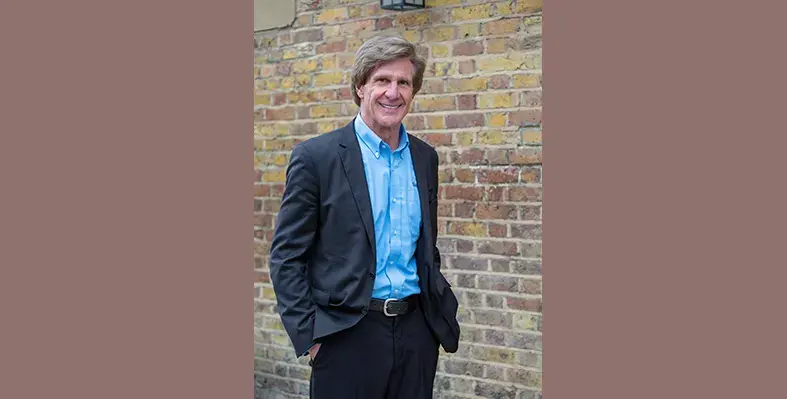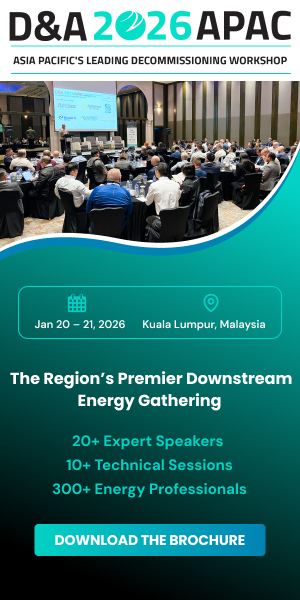Larry Wilson, Author and CEO SafeStart, discusses his journey to integrating human factors in Middle East workplace safety
Oil Review Middle East (ORME): Larry, thank you for joining us today. To start, can you share your vision for workplace safety in the Middle East, considering the unique challenges and opportunities in this region?
Larry Wilson (LW): The vision for workplace safety in the Middle East with SafeStart goes beyond workplace safety. The Critical Error Reduction Techniques work at home, on the road, in the community and at the workplace. So, the vision, plan and end goal are that we would start with workplace safety, prove that it works in industry, and then move in to sports, schools, youth groups and drivers education, similar to what has happened in North America, Latin America, Europe and the UK.
ORME: How can companies begin transitioning from a reactive safety culture to one that embraces human factors, where safety becomes a shared responsibility between the company and its employees?
LW: Although many companies in the region are only concerned with compliance, that is not unique. Many companies all over the world are content with achieving minimum legal requirements. Small, contracting companies may not even be aware of what a safety culture is or what it means. However, there is a growing number of high-profile and, in some cases, high-risk companies or organisations in the Middle East that are pursuing or trying to achieve a positive safety culture. These are typically the kind of companies we like to work with. And there are many of these companies in the region.
ORME: Given the diversity in the Middle East, where safety culture may vary greatly from one country or industry to another, what are the main challenges companies face when implementing human factors training, and how can these be overcome?
LW: Certainly, there are challenges trying to manage safety with so many languages, different backgrounds with different safety cultures. However, it doesn’t matter where you’re from, it’s the same four states: rushing, frustration, fatigue and complacency wherever you go. So, everyone, regardless of their background can relate and buy in to the concepts. This still means you have to accommodate the multiple languages and variable literacy levels. However, we already have a number of languages translated and we are planning more for next year.
ORME: How does SafeStart’s approach differ from traditional safety programmes? Can you share examples of how SafeStart has been a game changer in fostering a more proactive and engaged safety culture, particularly in a region where safety may not yet be ingrained?
LW: SafeStart is not about rules, procedures, Personal Protective Equipment or training on specific hazards. SafeStart is about keeping those hazards in mind and in sight: on the job, off the job and when you’re at home or in the community. So, the benefit to the worker is that it works everywhere not just at the workplace. The workers also get colouring books and videos so they can teach these concepts to their kids, this becomes a huge game-changer in terms of culture.
ORME: After conducting public workshops in the Middle East, what has been your overall feeling about the acceptance and receptiveness of human factors programs in the region? Are there any particular takeaways or surprises from those interactions?
LW: There has been a very positive response from the people who attended the workshop in Dubai. They liked the additional layer of protection offered by a Human Factors approach. I think what surprised a few people was that they started using the concepts and techniques right away, when they were driving home in rush-hour traffic. (You see a lot of rushing, frustration, fatigue and complacency in only a few minutes).
ORME: SafeStart has chosen Dubai and the broader Middle East as a strategic investment. What was the rationale behind this decision, and what do you hope to accomplish by establishing a stronger presence in this region?
LW: When I first came to Dubai 14 years ago it seemed to me that some companies were more interested in looking good than actually being good. But I think that has changed significantly and now companies want to be good or, in some cases, be the best or best in class. As mentioned, there are many of these companies in the region and the number is growing, so we felt confident investing in the region.
ORME: Looking ahead, what are your dreams and aspirations for the future of workplace safety in the Middle East? How do you envision SafeStart’s role in shaping the safety culture in the years to come?
LW: As mentioned earlier, the dreams and aspirations aren’t limited to workplace safety. Only 5% of unintentional fatalities occur at work. 95% happen away from work. And here in the Gulf region things are happening quickly. So, if a program like SafeStart starts showing good results with SOE’s we might get a shot at getting SafeStart into schools also.
ORME: For organisations in the Middle East looking to enhance their safety culture, what are the top three pieces of advice you would give, and how can they begin implementing them right away?
LW: I’m not sure there are three, I think there might be more than that in terms of what you may need to do to enhance your safety culture, and it also depends on where you are now. But the traditional approach to changing safety culture focused almost solely, on the leadership group. And while they have a lot of leverage, where the top-down approach usually stalls out is at the first-line supervisors. However, if you combine a top-down and bottom-up approach it is very possible for all members or the organization to be engaged in the safety effort, which will, over time produce a positive safety culture.
ORME: Finally, beyond just the Middle East, how do you see the global evolution of workplace safety programs, and what role do you think the Middle East will play in setting new benchmarks for safety and human factors integration?
LW: I see an improvement in safety anywhere if I haven’t been there for five years or so. In general, things are getting better everywhere but that doesn’t mean that they don’t have a long way to go. In the Middle East some high-profile companies are already being used as benchmarks by other companies or by their affiliates in other regions. And I think that we will see more and more of this in the next 5-10 years. Many of these companies are already looking at adding a human factors approach to their overall safety management system.









